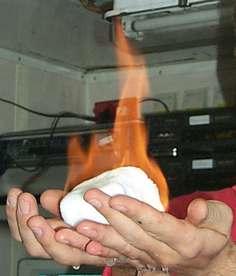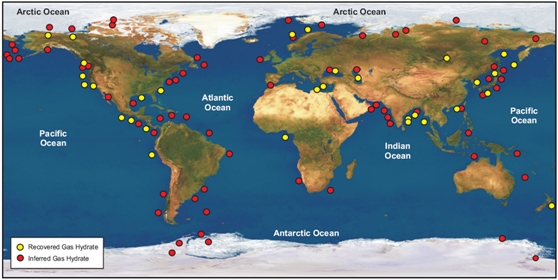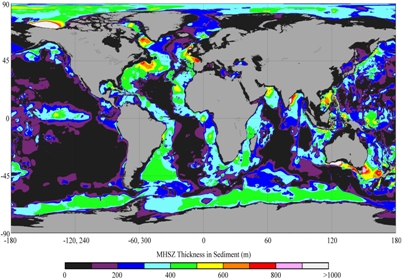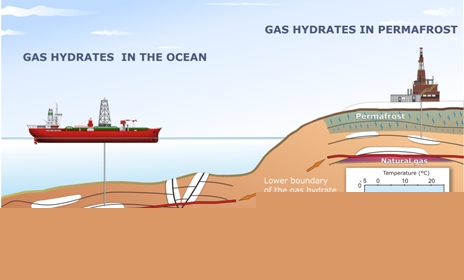Press Information
Gas Hydrates: Entrance to a Methane Age or Climate Threat?
Volker Krey, Josep G Canadell, Nebojsa Nakicenovic, Yuichi Abe, Harald Andruleit, David Archer, Arnulf Grubler, Neil T M Hamilton, Arthur Johnson, Veselin Kostov, Jean-Francois Lamarque, Nicholas Langhorne, Euan G Nisbet, Brian O’Neill, Keywan Riahi, Michael Riedel, Weihua Wang and Vladimir Yakushev.
Environmental Research Letters 4 (2009): 1-6, doi:10.1088/1748-9326/4/3/034007
Lead
Methane hydrates are a potentially vast fossil fuel energy source that could provide up to 10% to 15% of global natural gas production within the next two decades. At the same time, hydrates extraction for energy use and potential hydrate destabilization due to global warming could lead to the release of large emissions further providing an acceleration of climate change.
Paper Abstract
Methane hydrates, ice-like compounds in which methane is held in crystalline cages formed by
water molecules, are widespread in areas of permafrost such as the Arctic and in sediments on
the continental margins. They are a potentially vast fossil fuel energy source but, at the same
time, could be destabilized by changing pressure–temperature conditions due to climate change,
potentially leading to strong positive carbon–climate feedbacks. To enhance our understanding
of both the vulnerability of and the opportunity provided by methane hydrates, it is necessary
(i) to conduct basic research that improves the highly uncertain estimates of hydrate
occurrences and their response to changing environmental conditions, and (ii) to integrate the
agendas of energy security and climate change which can provide an opportunity for methane
hydrates—in particular if combined with carbon capture and storage—to be used as a ‘bridge
fuel’ between carbon-intensive fossil energies and zero-emission energies. Taken one step
further, exploitation of dissociating methane hydrates could even mitigate against escape of
methane to the atmosphere. Despite these opportunities, so far, methane hydrates have been
largely absent from energy and climate discussions, including global hydrocarbon assessments
and the Fourth Assessment Report of the Intergovernmental Panel on Climate Change.
Methane Hydrates Workshop
The "Vulnerability and Opportunity of Methane Hydrates Workshop”, hosted by the International Institute for Applied Systems Analysis (IIASA) in Laxenburg Austria on 13–14 March 2008 was the forum for the discussions upon which the "Gas Hydrates: Entrance to a Methane Age or Climate Threat?" paper was based. News Article (pdf, 81kb) ; Workshop powerpoint (pdf, 2.6mb)
Manuscript
Access manuscript http://stacks.iop.org/1748-9326/4/034007
Illustrative Images (available free if credited as specified). |
|
|---|---|
 |
|
Flaming Methane Hydrates
|
|
 |
|
Distribution of known methane hydrate accumulations |
|
 |
|
Estimated global methane hydrate stability zone thickness in seafloor sediments
(courtesy of Warren Wood, Naval Research Laboratory).
The methane hydrate stability zone indicates where appropriate temperature and pressure conditions for
the formation of hydrates can be found. |
|
 |
|
Illustration of methane hydrates recovery onshore from below the permafrost in the Arctic and offshore from the sediments of the
continental margins (courtesy of Bundesanstalt f¨ur Geowissenschaften und Rohstoffe). |
|
